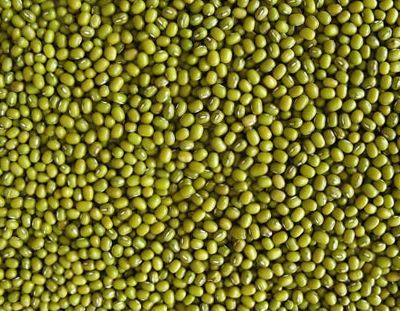Mung bean is an annual herb of the legume family and is native to China, India, and Myanmar. It has a history of over 2,000 years of cultivation. China is now produced in Henan, Hebei, Shandong, and Anhui provinces in the Yellow River and Huaihe River basins, and is generally listed in the autumn.

The color of mung bean seed coat is mainly composed of three categories: green, yellowish green and dark green. The seed coat has two types of luster (bright green) and dull (dark green). The color is rich in green and shiny, large and neat, round shape, easy to cook the best quality.
Mung bean is a traditional bean food for our people. Mung beans contain more vitamins, calcium, phosphorus, iron and other minerals than glutinous rice. Therefore, it not only has a good food value, but also has a very good medicinal value, there is a saying of "the good times." In the hot summer, mung bean soup is the most popular summer drink for ordinary people.
Nutritional value 1. The protein contained in mung bean, phospholipids have the function of exciting nerves and increasing appetite, which is necessary for many important organs of the body to increase nutrition;
2. The polysaccharide component of mung bean can enhance the activity of serum lipoproteinase and make triglyceride hydrolyzed in lipoprotein to achieve the effect of reducing blood fat, so as to prevent coronary heart disease and angina pectoris;
3. Mungbean contains a kind of globulin and polysaccharide that can promote the decomposition of cholesterol in the liver into bile acid in animals, accelerate the secretion of bile salts in bile and reduce the absorption of cholesterol in the small intestine;
4. According to clinical experiments, the active ingredients of mung bean have anti-allergic effects and can treat urticaria and other diseases;
5. Mung bean has an inhibitory effect on staphylococcus and certain viruses, can clear away heat and detoxify;
6. Mung bean is rich in trypsin inhibitors that protect the liver and reduce protein breakdown, thereby protecting the kidneys.
Mung bean contains protein, fat, carbohydrate, vitamin B1.B2. Carotene, nicotinic acid, folic acid, mineral calcium, phosphorus, iron. The protein contained is mainly globulins, and its composition is rich in lysine, leucine, and threonine, but methionine, tryptophan, and tyrosine are relatively small. If porridge is co-cooked with millet, it can increase nutritional value. Mung bean skin contains 21 inorganic elements with the highest phosphorus content. Another vitexin, β-sitosterol.
The nutrient content of mung bean (refers to the content in 100 grams of edible food)
Calories (Kcal) 316 Thiamine (Milligrams) .25 Calcium (Milligrams) 81
Protein (g) 21.6 Riboflavin (mg) .11 Magnesium (mg) 125
Fat (g) .8 Niacin (mg) 2 Iron (mg 6.5
Carbohydrates (g) 55.6 Vitamin C (mg) 0 Manganese (mg) 1.11
Dietary Fiber (g) 6.4 Vitamin E (Milligrams) 10.95 Zinc (Milligrams) 2.18
Vitamin A (micrograms) 22 Cholesterol (mg) 0 Copper (mg) 1.08
Carotene (micrograms) 3.3 Potassium (mg) 787 Phosphorus (mg) 337
Retinol equivalent (micrograms) 12.3 Sodium (mg) 3.2 Selenium (micrograms) 4.28